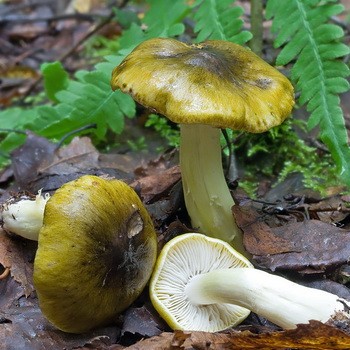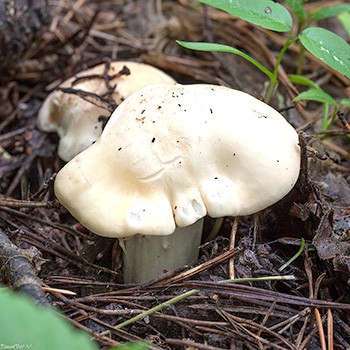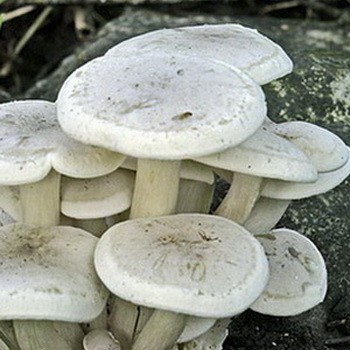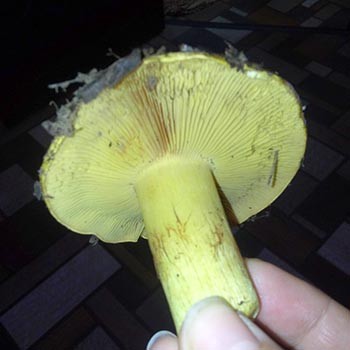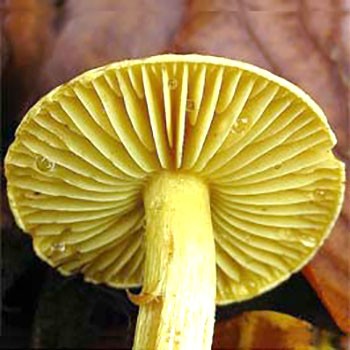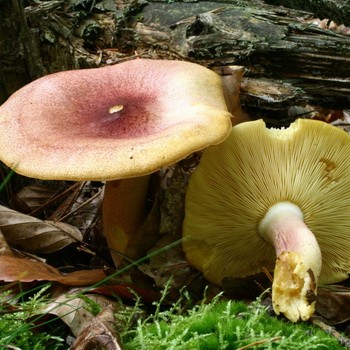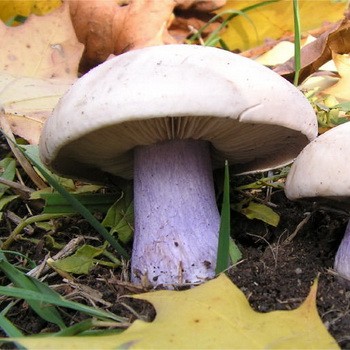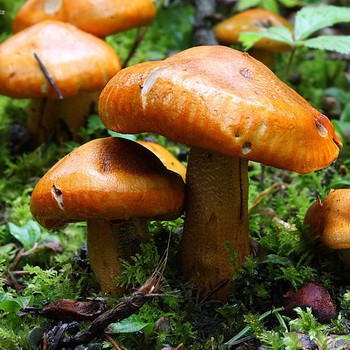Poisonous mushroom tiger pied (leopard)
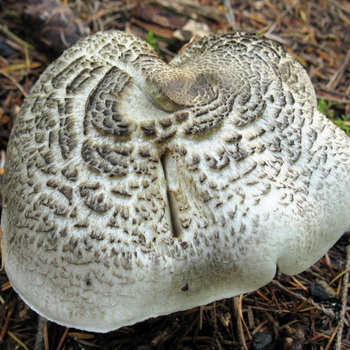
Tiger mushrooms are distributed throughout Russia in the temperate zone of the Northern Hemisphere. Fruiting usually begins at the end of the summer months and continues until the first frost. It is worth noting that many edible species of row mushroom pickers are easily confused with the tiger row, which is a fairly toxic mushroom. Before picking these mushrooms into their basket, fans of the “quiet hunt” should accurately distinguish between the poisonous tiger row, the photo of which is attached below, from its harmless relatives, so that by accident they do not appear in the hospital.
To better remember the appearance and characteristics of tiger rowing, check out the photo and description of this fruiting body.
Ryadovka tiger: photo and description of the mushroom
Latin name: Tricholoma pardinum.
Gender: Tricholoma.
Family: Ordinary.
Synonyms: leopard row, poisonous row.
Hat: diameter from 4 to 10 cm, sometimes up to 12 cm. In young specimens, the shape of the hat is spherical, becomes more convex with age, and in older individuals it is fully extended, with thin edges curled down, the entire surface of the cap crackes. Colors range from off-white to silver-bluish. The surface of the cap is littered with flakes of scales that diverge in circles on it. A photo of a tiger or leopard patch will help to more clearly represent the differences and similarities of the fungus with other species.
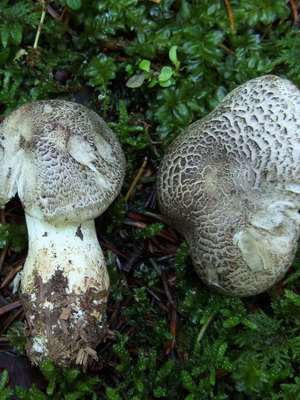
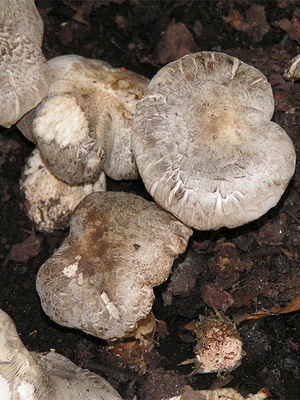
Leg: height can vary from 3.5 to 10 or 12 cm, diameter from 2 to 4 cm, cylindrical in shape, with some thickening at the root. In the photo of the tiger row, it can be seen that young specimens of the fungus have a fibrous surface, which becomes almost smooth with age. Color varies from tan to light mealy, with light tones closer to the center.
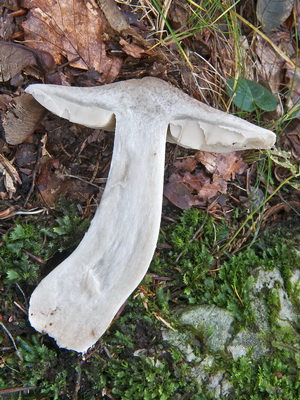
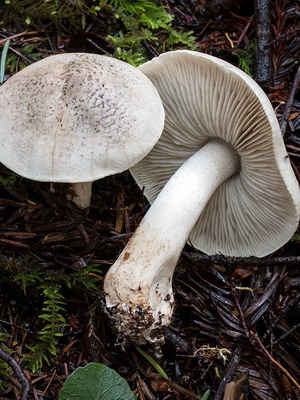
Pulp: white with a grayish tint, has a gray color under the skin, and yellow at the base of the mushroom. It does not have bitterness, the color does not change with a break. The smell is almost always pleasant, less often - deceptive flour.
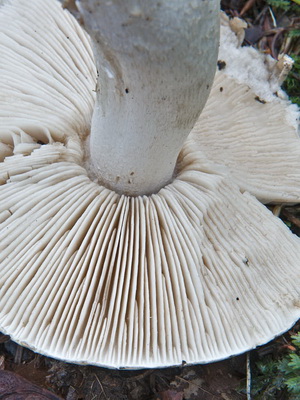
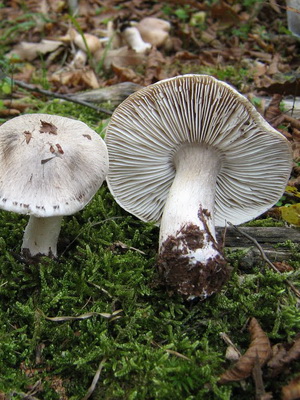
Records: frequent, adherent to the leg with teeth, with a width of 0.8 to 1.2 mm. Young specimens have a whitish shade of plates, sometimes they can be slightly yellowish. A photo of the tiger row mushroom clearly shows that the plates constantly emit watery drops.
Edibility: tiger mushroom is a poisonous mushroom, even in small quantities its toxins cause intestinal upsets. Due to the pleasant aroma and taste, the fungus is not associated with poisonous species of rows. These features may prompt the mushroom picker to put the fruiting body in its basket, and then cook it. Signs of gastrointestinal poisoning appear at least 20 minutes, a maximum of 2 hours after ingestion of mushrooms. The following symptoms are observed: nausea, vomiting, diarrhea, excessive salivation, weakness, sharp abdominal pain, headache and fever.When the first signs appear, it is urgent to call an ambulance.
Similarities and differences: the tiger poisonous rank is very similar to the edible gray row in appearance. However, the main difference is the presence of scales on the head of a poisonous mushroom.
The edible row of earthy-gray is similar to a tiger row. However, she has a brittle hat with a diameter of up to 7 cm, gray. The leg is almost white, does not have a skirt ring.
Spread: leopard or tiger ranks grow in the temperate climatic zone of Russia. Usually they prefer to grow in small colonies, forming “witch rings”, less often they occur singly. Fruit bodies form a symbiosis with conifers, sometimes found in mixed and deciduous forests on sandy soils covered with moss. Particular preference is given to pine, spruce, less often beech, oak and lime. Begins fruiting in August and ends in mid-October. Under favorable weather conditions, growth may last until the end of October or beginning of November. Tiger row can often be found in parks, gardens, fields and meadows.
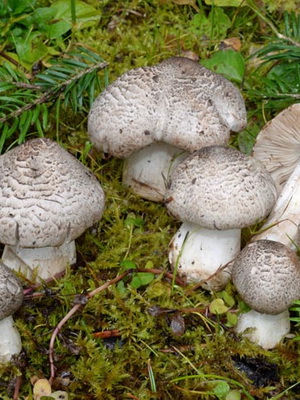
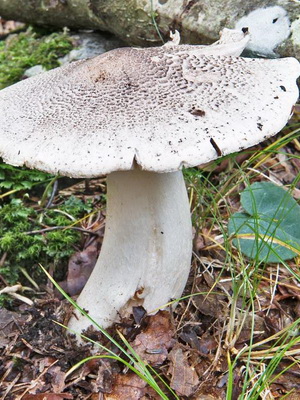
Fans of the “silent hunt” should definitely use the description and photos of the mushrooms of tiger rows, which clearly show their fruiting in natural conditions, as well as the appearance. Having the necessary information in your arsenal, you can correctly distinguish edible representatives from poisonous ones. However, never forget the main thing: if you are not sure about the fruiting body found, leave the idea to take it into the basket!
